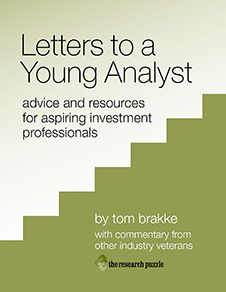
- Monday, April 13th, 2009
- paper or plastic
-
What is the best format for the delivery of information? It depends. What are you trying to do?
In our collective journey of digitization, we have seen phenomenal changes in the tools by which we receive our news, music, gossip,You could add lots of capital letters and emoticons to a gossipy text message; it will still pale in emotional comparison to the shrieks of shared scuttlebutt at a beauty parlor. etc. Many of the established organizations that created and delivered information in the analog world are struggling or have already failed, hastened by a great migration to a universe of links.
I know I risk being deemed a Luddite with this line of discourse, although I have always been willing to embrace emerging technologies that I find make sense for what I am trying to do. I have just never been willing to embrace change for change sake if the net effect is a progression in appearance and a regression in fact.
Take music. I listen to a wide range of music in almost every format used in the last fifty years. (I did get rid of the eight tracks.) Yet I prefer LPs over all the other, because of the quality of the sound, a view shared by at least some others, since the pressings of new and reissued vinyl are growing very quickly right now, albeit off of an admittedly tiny base.
Similarly, you can expect that as a collector of first editions there’s nothing I like quite as much as curling up with a book. The tactile aspects of it appeal to me and it’s a marvelous format for long-form works. The Kindle comes close to replicating the experience and offers some other obvious advantages. While I prefer a book, the electronic imitation delivers a lengthy linear work in acceptable fashion and offers the opportunity for more diverse applications down the road.The New York Times | This article on Vook gives a glimpse at some new mash ups that are on the horizon.
Where one really notices the difference in information processing between the old and the new is with newspapers and magazines. I first noticed this a number of years ago when I moved from reading the Wall Street Journal and Barron’s entirely online back to primarily reading it in print and supplementing that with trips to the website for certain things or updates throughout the day. I was astonished at the difference in the information flow. An online site is largely plasticized, formed at any point in time by the online editor’s conception of what you want. That’s nothing new; editors have always organized the news in the way that they think is best.
The difference is that the small footprint and linked structure of a website lead to a narrower field of view and much less discovery than what you get from reading news in the traditional formats. We are seduced into thinking that everything is at our fingertips online, yet the serendipity is mostly missing and the “aha” moments are less frequent. For someone in the markets, the old adage applies: The true opportunities are to be found by looking at the nuggets buried deep in the Journal or other publications, not on the front page. Yet most of the heavily-read financial sites offer interchangeable headlines and common stories of discussion; the nuggets are harder to find online than they are in print.
We will set aside for now an examination of the fading business models of newspapers and other information providers and the implications for the coverage of business and investment issues. Those organizations still provide the bulk of the content that really matters, even if others essentially claim it as their own.The New York Times | This article on Morgan Keegan and municipalities in Tennessee is an example of the kind of piece that we will be without if newspapers go away or are forced to curtail their operations even further. The vaunted “crowd” doesn’t do work like this. Instead, we will proceed by looking at one of the hottest new applications out there.
